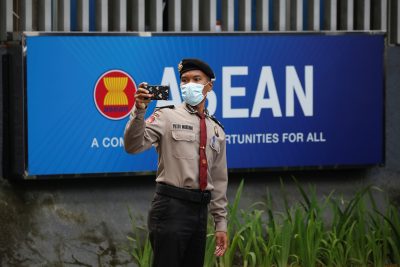To get a handle on Australia’s economic cooperation with Southeast Asia, consider these two statistics. One, Australia has more international direct investment in New Zealand than in all of the ten members of ASEAN combined. Two, only a couple of Southeast Asian countries make it into Australia’s top ten trading partners.
This is a massive missed opportunity. The economic rewards for Australia across developing Asia are immense. More than any other OECD country, Australia is well-placed to build stronger economic links with Asia. And the benefits to Australia are not just economic, with a prosperous Indo-Pacific region making Australia more secure.
It is a strange situation. Australia has an enormous stake in Southeast Asia’s success, but its economic links do not reflect this.
There have been many efforts to lift the level of Australia’s economic cooperation with Southeast Asia. Some, like the Australia in the Asia Century White Paper, aim to convince business of the opportunities. Others focus on facilitating trade and investment, like the ASEAN–Australia–New Zealand Free Trade Area. There are promising recent initiatives like Katalis, a government-backed business development program designed to maximise benefits from the Indonesia–Australia Comprehensive Economic Cooperation Agreement.
But these efforts haven’t moved the dial that much.
If major conflict can be avoided, there are good prospects for strong and sustained growth across developing Asia for at least the next 50 years. By 2050, five of the ten ASEAN states may be among the top 25 global economies. There will be bigger markets, especially for services, more two-way investment opportunities and widening regional economic integration.
Australia needs to recognise the huge national interest benefits of Asian growth and prepare to gear up to take advantage of them. This requires a change of mindset. Domestic reforms are needed within Australia to remove barriers to economic engagement and reject the ‘fortress Australia’ mentality.
Australia’s international economic diplomacy must also become more connected. Currently, multiple departments and agencies across different levels of government pursue different and sometimes contradictory international economic objectives. There is currently no machinery in Canberra to bring all of this together to maximise the gains for Australia. In the past, a lack of coordination on Australia’s Southeast Asian economic diplomacy mattered less because East Asian growth has been so rapid and its demand for resources so large, that the benefits outweighed the costs. But this approach has left Australia over-reliant on China and on mineral exports.
To make inroads, Australia needs to be ambitious by repositioning its economic diplomacy with a coherent long-term plan, bringing deep expertise and Asia literacy to the task.
A new report from the Asia Pacific Development, Diplomacy & Defence Dialogue outlines such a pathway to economic cooperation. Its recommendations for a government-led approach are as follows.
Australia should establish a new Southeast Asia Economic Cooperation Program driven by a professional economic cooperation agency within the foreign affairs portfolio. To be influential, it will need to be of significant scale, recognising both what needs to be done and how others have stepped up, including the United States, Japan, the European Union and China.
A new Southeast Asian Economic Cooperation Program should have a development orientation, but not an aid mindset. Grant funds will typically be provided in partnership with ASEAN countries and others to finance technical expertise to help countries execute complex projects.
A lending arm should be created as an Australian development financing institution while a joint feasibility study is undertaken with ASEAN to explore the possibility of establishing a new regional Carbon Bank, which can mobilise clean energy finance for Southeast Asia and the Pacific. Using relatively small amounts of paid-in capital, billions of dollars can be leveraged to accelerate the transition to climate-friendly energy generation.
A new Economic Cooperation Program Agency will recruit high-level expertise from government, the private sector and the region, enabling the agency to have sophisticated influential dialogue with Southeast Asian states on key policy questions. This approach will also allow Australia to interact more effectively with international institutions such as the World Bank and the Asian Development Bank.
For the Department of Foreign Affairs and Trade, support for regional economic development provides a long-term agenda and a business case to expand its strategic planning, economic and development capability. A focus on public financial management, pursued in strategic partnership with multilateral development banks, offers catalytic opportunities. This approach will expand Australia’s opportunities for regional engagement and leverage on matters of ongoing importance to heads of government, strengthening relations with countries destined to become much more influential.
A sustained government-led focus on maximising economic integration between Australia and Southeast Asia is one way Australia can contribute to the region’s success. A strongly-integrated Australia will benefit from Southeast Asia’s dynamism and growth, with a material impact on Australia’s economy and security.
By Peter McCawley, ANU and Melissa Conley Tyler / eastasiaforum
The views and opinions expressed in this article are solely those of the author and do not necessarily reflect the position of AsiaWE Review.




